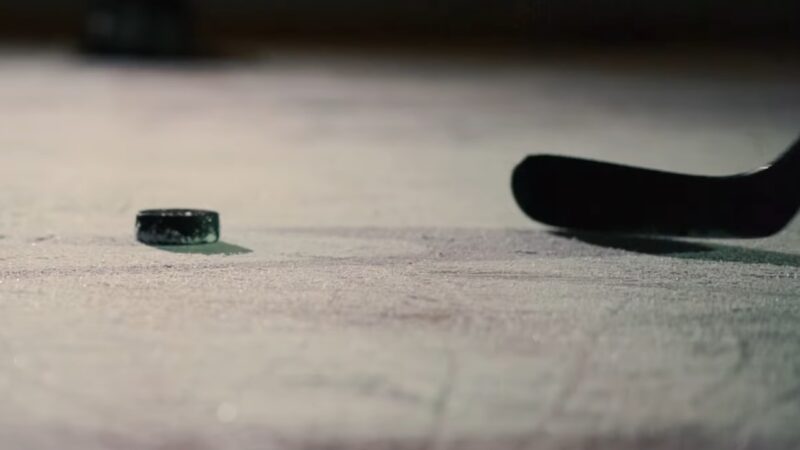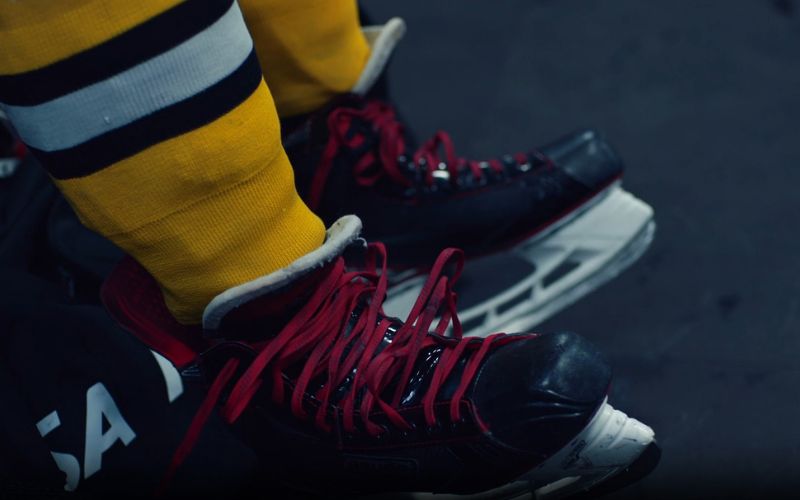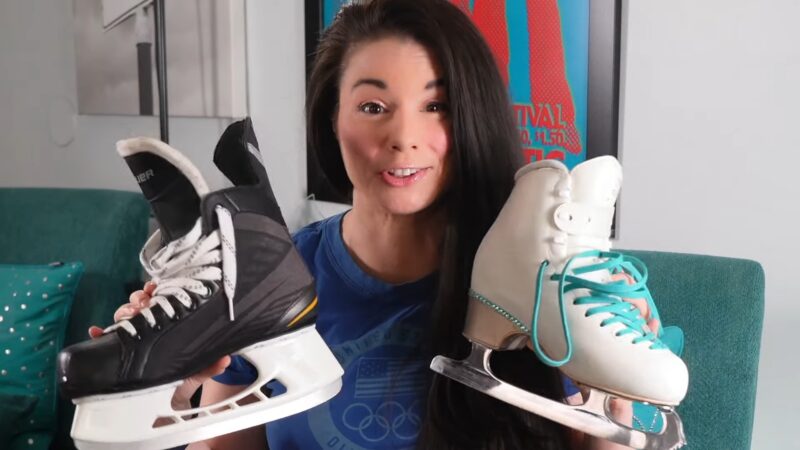
Hockey, which is easily among the most popular sports in the US, attracts a high number of children every year. However, the financial aspect of participating in these activities often becomes a significant consideration for families. Therefore, being able to meet these requirements requires being aware of them fully.
With the average cost of youth sports for one child each year pegged at $693, it’s essential to go into specifics, especially for sports known for their higher expenses, such as ice hockey. Ice hockey stands out as the most expensive children’s sport, with an annual average cost of $2,583.
On the flip side, track and field presents itself as the most affordable option, with an average yearly expense of just $191.
That is why I would like to go through all the costs associated with taking the first steps in this sports discipline.

The Cost Breakdown
First, let us take a look at three levels of costs you might encounter.
Initial Equipment Costs

The first step is gearing up, and it’s no secret that this sport requires a comprehensive list of equipment. Without any doubt taking a look at the initial costs might be daunting at first, but you will quickly see these costs are justified.
| Item | Cost Range |
|---|---|
| Skates | $50 – $1,200 |
| Hockey Sticks | $45 – $370 |
| Helmets | $50 – $430 |
| Shoulder Pads | $25 – $220 |
| Gloves | $24 – $230 |
| Elbow Pads | $15 – $160 |
| Hockey Pants | $15 – $230 |
| Shin Pads | $20 – $200 |
| Neck Guards | $11 – $35 |
| Mouthguards | $15 – $40 |
Recurring Expenses
After the initial investment in equipment, hockey players encounter ongoing expenses that play a crucial role in shaping the financial landscape of their participation. Key among these are the costs associated with securing ice time and obtaining quality coaching, both essential for honing skills and thriving in competitive environments.
The financial implications of participating in hockey are further compounded by the costs associated with travel for attending tournaments and league matches. Additionally, the necessity for regular maintenance and periodic upgrades of equipment also adds to the financial burden.
| Expense Category | Cost Range | Notes |
|---|---|---|
| Initial Equipment | Varies | One-time cost; can be mitigated by buying used or borrowing equipment |
| Ice Time | Part of $500-$3,000 | Essential for practice and development |
| Coaching Fees | Part of $500-$3,000 | Critical for skill improvement and competitive play |
| Travel Expenses | Part of $500-$3,000 | Includes transportation, lodging, and meals for tournaments and games |
| Equipment Maintenance | Part of $500-$3,000 | Ongoing costs for upkeep and upgrades |
| League Fees | Part of $500-$3,000 | Required for league participation |
| Tournament Fees | Part of $500-$3,000 | Costs for entering competitive tournaments |
Hidden Costs

The commitment to the sport encompasses not just the gear and the ice time but also the less apparent costs that can accumulate quietly.
Traveling to tournaments and away games, dealing with injuries that may lead to medical expenses, and the additional outlays for proper nutrition and specialized training are just a few examples of these hidden financial burdens.
These unforeseen expenses highlight the critical need for families involved in competitive hockey to adopt a holistic approach to budgeting and financial planning. By doing so, they can safeguard the player’s ability to reap the sport’s rewards without being blindsided by unexpected costs.
| Expense Category | Potential Costs |
|---|---|
| Travel | – Gas or airfare – Accommodations – Meals on the road |
| Medical Bills | – Emergency care – Physical therapy – Ongoing treatment for injuries |
| Nutrition | – Specialized diets – Supplements – Hydration needs |
| Specialized Training | – Private coaching fees – Specialty clinics – Off-ice conditioning programs |
| Miscellaneous | – Equipment maintenance – Replacement of broken gear – Team dues or fundraising contributions |
Comparing Costs Across Levels

The second layer of costs is associated with the levels you play at.
Youth Hockey
For children embarking on their hockey journey, the financial commitment begins with learn-to-skate programs and entry-level leagues. Going through these trainings helps build the form and skating skill in later years.
The cost of participation at this stage offers a foundation for the sport’s lifelong benefits, including physical health, mental well-being, and social development.
However, the significant investment required can be a hurdle for families, making it crucial to explore avenues for reducing expenses, such as equipment exchange programs and community grants. For students, it can be quite a challenge to find the balance between hockey and studying.
Amateur/Recreational Hockey
Adults playing hockey at a recreational or amateur level face similar financial considerations, with equipment and ice time constituting major expenses. The comparison between youth and adult hockey costs highlights the sport’s ongoing financial demands, regardless of age or competitive level.
Yet, the community and enjoyment derived from participation underscore the value of this investment, transcending mere financial calculations.
Competitive/Travel Hockey
The leap to competitive or travel hockey marks a significant increase in financial commitment. The comprehensive nature of these programs, encompassing frequent travel, intensive training, and higher league fees, reflects the dedication required to excel in the sport.
For players and families navigating this level, the challenge lies in balancing the costs with the unparalleled opportunities for growth, competition, and personal achievement that competitive hockey offers.
Ways to Mitigate Costs

Despite the high costs associated with playing hockey, there are strategies to mitigate these expenses, at least to a degree.
Borrowing or Buying Used Equipment
One of the most straightforward ways to cut costs is by borrowing or purchasing second-hand equipment. Many hockey communities have forums, social media groups, or local clubs where members are willing to lend or sell gear at a fraction of the cost of new items.
This approach not only saves money but also promotes a sense of community and support among players and families. Additionally, some hockey shops offer trade-in programs where you can get credit for bringing in old equipment, making new purchases more affordable.
Equipment Exchange Programs
Many leagues and hockey associations run equipment exchange programs, allowing families to swap gear that their children have outgrown for appropriately sized items. These programs can significantly reduce the need to purchase new equipment every season, especially for growing children.
Participating in these exchanges not only helps your budget but also supports other families in the community facing similar financial challenges.
Scholarships and Community Grants
A number of organizations and foundations offer scholarships or grants specifically aimed at helping young athletes participate in sports like hockey. These financial aids can cover a range of costs, from league fees to equipment purchases.
Applying for these opportunities requires some research and effort but can significantly offset the overall expenses. Local sports clubs, schools, and community centers are excellent resources for finding out about available scholarships and grants.
The Bottom Line

Hockey is filled with challenges and rewards, not least of which is the financial commitment required to participate in this beloved sport.
While the costs can be substantial, ranging from $2,077 to $8,180 annually, the benefits of playing hockey—physical health, mental well-being, social skills, and academic performance—offer compelling reasons to invest in this pursuit.
For those passionate about the sport, the key lies in navigating the financial landscape with savvy and resourcefulness, ensuring that the ice remains a place of joy, growth, and community for all who step onto it.
Related Posts:
- What Does OTL Mean In Hockey? NHL Facts
- How Much Do NHL Refs Make? NHL Referee Salary in 2024
- Hockey Skates vs. Figure Skates - What is the Difference?
- How Long Is the Average Hockey Game? - Puck Drops,…
- Why Do They Let Hockey Players Fight? Is Fighting Allowed?
- Analyzing the Impact of Analytics on Ice Hockey: A…













